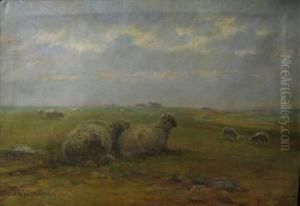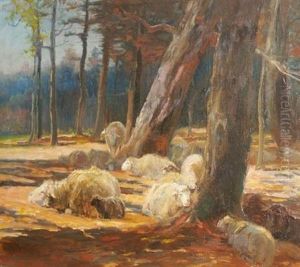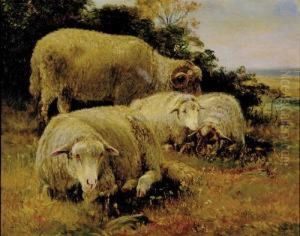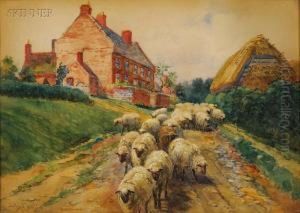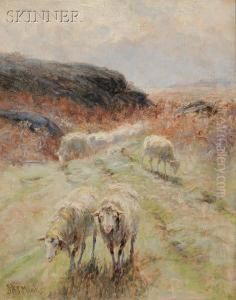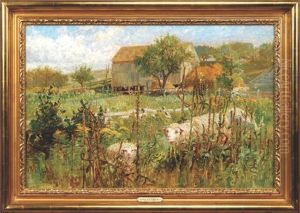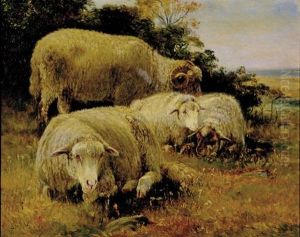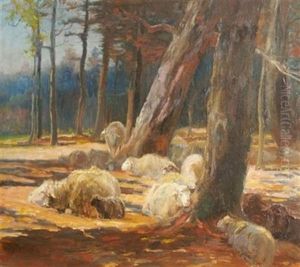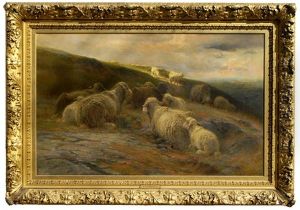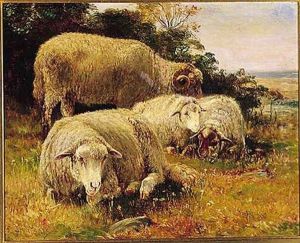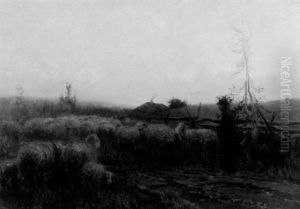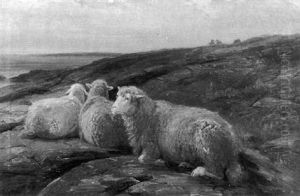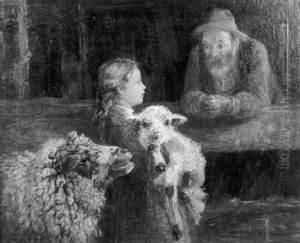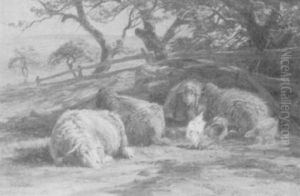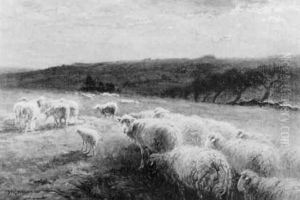John Austin Sands Monks Paintings
John Austin Sands Monks was an American painter born on January 7, 1850, in Cold Spring Harbor, Long Island, New York. Monks is most notably remembered for his pastoral landscape paintings and his detailed depictions of sheep, which have earned him the moniker 'shepherd of the sheep'. His work in this genre is characterized by an intimate and affectionate portrayal of farm animals, a subject that he revisited throughout his career, capturing the serene and pastoral life of the American countryside.
Monks began his artistic training at the Lowell Institute in Boston and continued his education at the School of the Museum of Fine Arts, Boston. His development as an artist was further influenced by his travels to Europe, where he was exposed to the work of the Barbizon painters in France, whose focus on rural scenery and soft, diffused light had a lasting impact on his own style. Monks also spent time in the Netherlands, where the pastoral landscapes further shaped his artistic vision.
Upon returning to the United States, Monks established himself in the Boston area, where he became an active member of the local art community. He was a member of the Boston Art Club and the Copley Society, among other institutions. His works were frequently exhibited in these circles, as well as at the National Academy of Design in New York. Monks' paintings were well-received, and he gained a reputation for his ability to capture the texture and form of sheep's wool, as well as the tranquility of rural American life.
Monks' artistic legacy is marked by his dedication to a single subject matter—the sheep—which he portrayed with a mix of realism and idealism. His paintings often convey a sense of peace and idyllic beauty, which resonated with audiences of his time who were facing the rapid changes of the Industrial Revolution and urbanization. Monks continued to paint and exhibit his work until his later years.
John Austin Sands Monks passed away on May 7, 1917, in New York City. Today, his work is part of the collections of several museums and is considered an important part of the American pastoral and animal painting tradition of the late 19th and early 20th centuries. Monks remains a respected figure for his unique focus on sheep and farm life, offering a window into the agrarian past of the United States.
